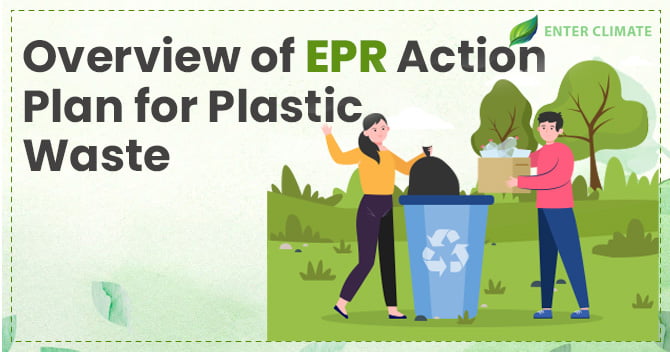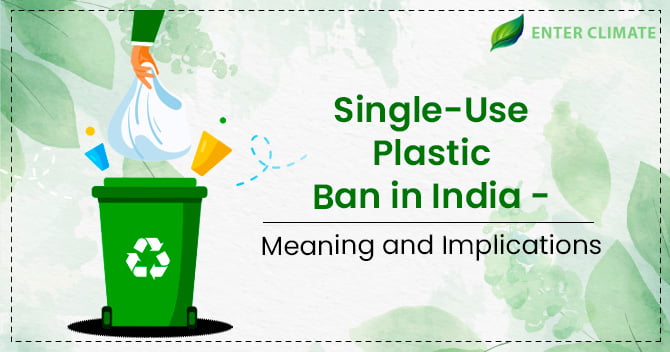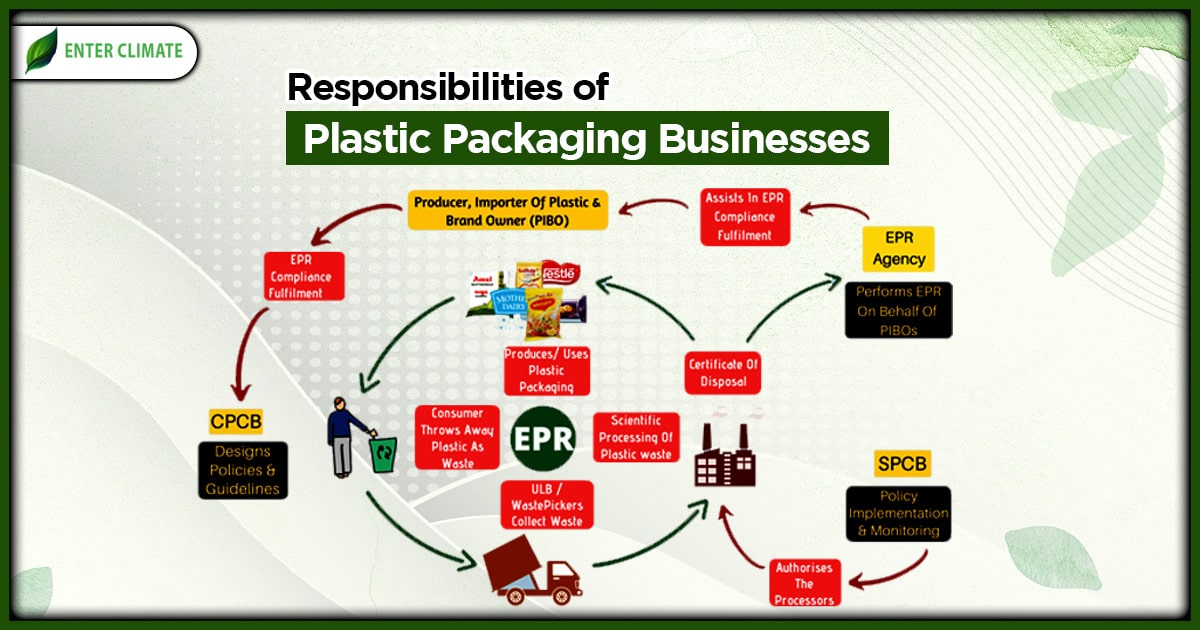Overview of EPR Action Plan for Plastic Waste
 21 Jul, 2022
21 Jul, 2022 
Extended Producer Responsibility (EPR) is a waste management approach introduced for the Producers, Importers and Brand Owners (PIBOs) and the Plastic Waste Processors in the Plastic Waste Management (PWM) Rules. They were identified as entities that introduce plastic into the consumer market and therefore were given the responsibility for the recycling of the waste generated by their product based on the Polluters Pay Principle. PWM Rules made the PIBOs and plastic waste Processors responsible for collecting, recycling and disposing of end-of-life plastic products. These entities must obtain prior EPR authorisation from the CPCB after submitting an EPR Action Plan when applying for EPR authorisation under the PWM Rules 2016. EPR action plan is a detailed description of the collection, recycling and disposal methods and practices the applicant will implement to achieve its mandated target under Plastic Waste Management. EPR Action Plan is an essential part of the EPR Authorisation as it will depict the entity’s capabilities of collecting, recycling, processing and disposing of plastic wastes.
Important EPR terms and their significance in EPR Action Plan
EPR Targets
EPR Targets refer to plastic waste collection and recycling targets that a PIBO must meet to fulfil its EPR. These targets have been elaborated in the PWM Amendment Rules, 2022, and a category-wise EPR target (in MT), as applicable, has to be provided by Producers, Importers and Brand Owners as well as plastic waste processors as part of their EPR Action Plan.
- For Producers: targets are calculated as Eligible Quantity (Q1) which is the combined weight of average plastic packaging material (category-wise) sold in the last two financial years and the average quantity of pre-consumer plastic packaging waste in the last two financial years.
- For Importers: the eligible quantity (denoted as Q2) will be the average weight of all plastic packaging material and plastic packaging of imported products (category-wise) imported and sold in the last two financial years combined with the average quantity of pre-consumer plastic packaging in the last two financial years
- Brand Owners: Eligible Quantities (denoted as Q3) is the average weight of virgin plastic packaging material (category-wise) purchased and introduced in the market in the last two financial years plus the average quantity of pre-consumer plastic packaging in the last two financial years.
Collection System
The PBIO has to declare the name and address of collection centres and the list of recyclers with whom it has agreements. They also need to show how it plans to publicise its collection system details like the address of collection points and their working, i.e. buybacks and takebacks to the consumers.
- Take Back System: taking back the end-of-life products and informing the consumer of the price at which they will be repurchased.
- Buy Back System: the option of selling the end-of-life waste product back to the manufacturer and purchasing a new product after subtracting the price of the returned old product.
Recycling under EPR Action Plan
Recycling is the process of transforming segregated plastic waste into a new product or raw material for producing new products. The main focus of the EPR Action Plan is on meeting the recycling targets and indulging only authorised recyclers for the purpose.
End of Life Disposal
Plastic Waste that cannot be recycled is sent for end-of-life disposal to agencies involved in road construction, waste to energy, waste to oil, cement kilns (for co-processing) etc. an EPR Action Plan should ensure that only unrecyclable plastic waste will be sent for disposal.
Format of EPR Action Plan for Plastic Waste
The reason for demanding an EPR action plan at the time of EPR authorisation is to ensure that the PIBOs have worked upon the required capacity and capabilities for plastic waste management before introducing their products into the market. The EPR Action Plan format includes the following sections.
General Information Section: this section contains columns like the Unit’s name, address & contact information.
Details of the Product: this section includes details like the type of Plastic and its quantity, the name of the product, category of Plastic in which the product falls (Category I, II, III) as per the 2022 Rules.
Post-Consumer Plastic Waste: in this section, PIBOs have to declare an estimated quantity of Post-Consumer Plastic Waste which will be generated annually.
Waste Quantity to be covered: in this section, PIBOs have to declare the quantity of plastic waste covered under their action plan annually.
Recycling Channel implemented: this section requires elaboration on the channel chosen by the PIBO on which their EPR action plan will be based and whether that channel has a pan-state or pan-country coverage. These channels are as follow.
- Collection through Own Distribution Channel
- Engagement with ULBs/Gram Panchayats/ Urban Development Department (UDD)/ Rural Development Department (RDD)
- Engagement of Waste Management Agency (WMA[1])/ Producer Responsibility Organisation (PRO)
- Any Other channel.
Recycling Details Section: Subsequent sections of waste collection, recycling and disposing of the non-recyclable plastic will depend on the channel the PIBO has chosen to fulfil its EPR. Generally, if the PIBO chooses its own distribution channel or a PRO for the purpose, details (including registration details) of the Collection network (kabadiwala, ragpickers, collection centres details of transportation), route of channelisation, buyback, engagement with re-user, recycler, coprocessors, agencies engaged in road making/ Waste to energy/ Waste to oil or any other entities whichever is applicable, has to be provided. This section should be supported by documents or agreements between the PIBOs and the entities.
Flow chart: A diagrammatic representation of Channelisation of Plastic Waste must be included showing details of the stages involved in the recycling life cycle of the product i.e.
- Stage 1: Sale to the end customer
- Stage 2: Buy-back and takeback mechanism after the proposed lifetime of the product.
- Stage 3: intimation to the recycler to collect plastic waste from the location
- Stage 4: Submission of proof that the product/ recycling/ reprocessing has been completed.
- Stage 5: Filing annual returns to CPCB by recyclers/ PROs on behalf of the PIBO.
A section with the estimated budget for EPR Action Plan can be provided, showing the cost involved in the collection scheme, collection centres, RoHS testing, website information and other schemes if proposed.
Conclusion
In their authorisation journey, a precise EPR Action Plan is essential for PIBOs and plastic waste processors. EPR Action Plan strategies streamline the actions needed to meet environmental regulations and prevent post-compliances issues. Post-compliance can become challenging in the light of tightening government restrictions and changes made in the plastic waste management sector and will need special assistance and guidance from experts in the game. SPCB/PCC are the monitoring bodies and keeping regular checks on the EPR post-compliance by the PIBO. They also have the authority to levy environmental compensation and penalties. Therefore, a strategically planned and executed EPR Action plan can help PIBOs avoid future legal complications and missing deadlines or targets. One can develop an EPR Action Plan by investing in experts in the field of EPR to save PIBO their time and money and reward them in many ways in the long run.
Read our Article:Plastic to Fuel Business: Plastic Waste to Energy Recovery













